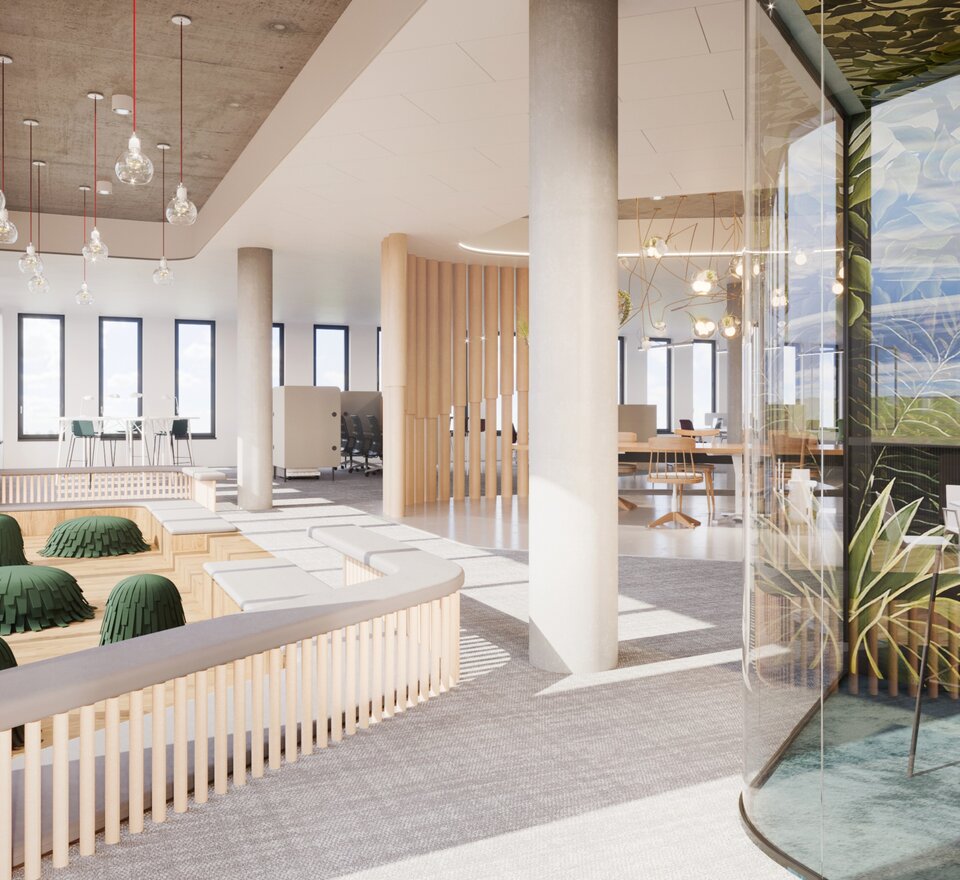New technologies, increasing mobility and a globalised employment market, new generations of employees as well as new forms of organisation produce a dynamic pressure of change in the office world.
Digitisation isn’t just changing companies, but also the way in which we work and where we work, and in what way we communicate with each other. The focus of the modern world of work is creativity, innovative ideas and collaboration. Where before, offices with solid walls and assigned desks were the custom, today there is a demand for open, renovated room structures. However, not in the sense of unpopular open-plan offices, but in the form of flexible open units.
In the long term, three spatial concepts above all will mark out the future office: co-working spaces, which are designed like lounges or cafes and offer the ideal conditions for team and project work. Spaces for high concentration work – small and quiet. And high-tech communication spaces which give employees the opportunity to work from their location in virtual teams as well.
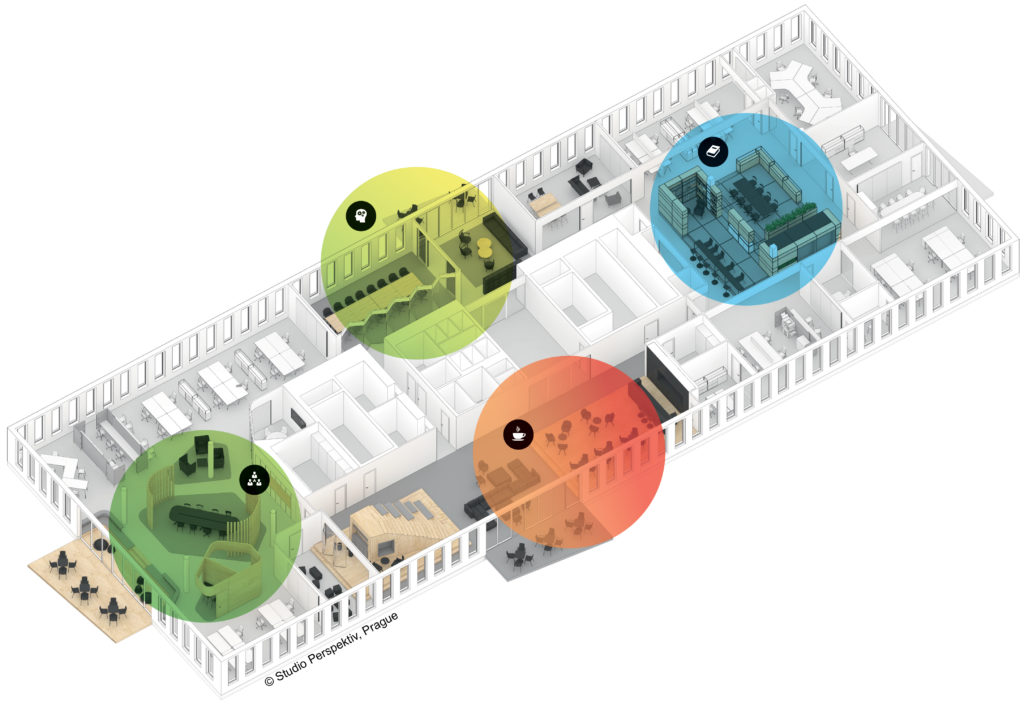
Activity-based working
A ‘new work’ working environment follows the principle of “activity-based working”: what are you working on just now? How much space do you need for that? And what’s the best place for these activities? An activity-based working environment opens up completely new design possibilities for companies: future offices offer employees differentiated, changing working surroundings which create a supportive ambience depending on the task. Above all when employees should work (together) in a creative, project-oriented and independent way. Here, the most varied of areas in the company can be used: middle areas, meeting areas in corridors, project rooms, working cafes, lounges, libraries, etc. In terms of design, you can do anything you like; an emotionalization of the environment is explicitly encouraged. The crucial factor is what is relevant for each company and what suits the company in terms of productivity and culture. In the following, we present four examples which are characteristic of new working environments.
Café entrance
The classic reception area becomes a working cafe. The reception desk becomes a bar. Instead of “sitting and waiting”, people “sit and work or communicate”. The café entrance is a public area – the company can decide for itself how public this is to be. Guests such as suppliers or customers can make themselves comfortable here and pass their time. Some companies even go a step further and open up their reception bar area for visitors who have nothing to do with the company. What good is this? Image and brand development, for example. Expanded to include a campus area, the foyer soon becomes a complete event location.
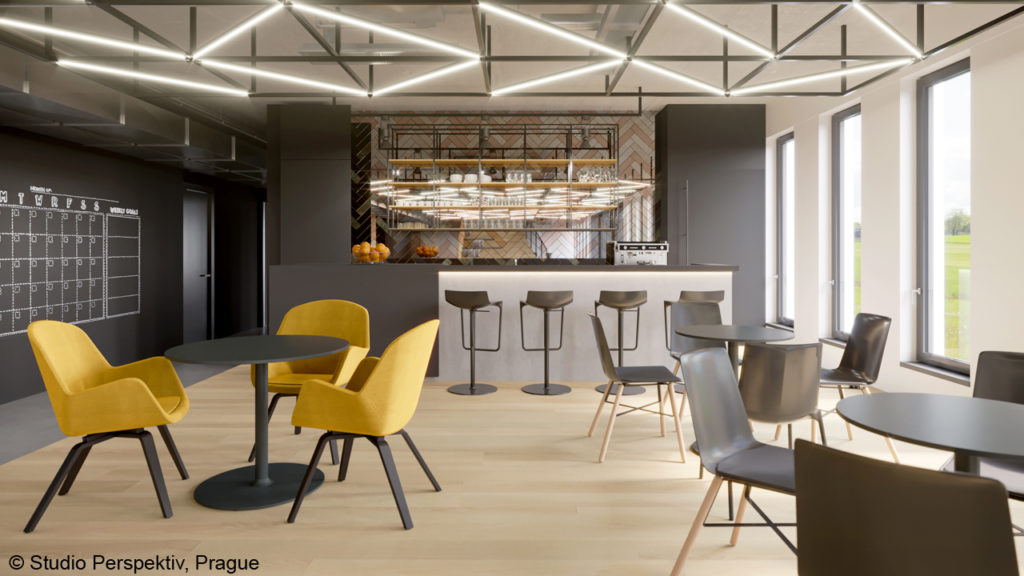
Conference lobby
Inspired by hotel reception areas, the conference lobby combines the classic meeting room with the comfortable relaxation area. Here, the lobby isn’t a closed-off retreat area, but open and directly linked to the conference area. This balances out the accentuated coolness of the meeting atmosphere with a warm, emotional one created by the design – comfort paired with cosiness and a lounge-atmosphere: with warm colours, soft upholstered furniture and friendly lighting. We don’t just have creative interior design for the sake of it; it contributes a lot to the quality and culture of communication.
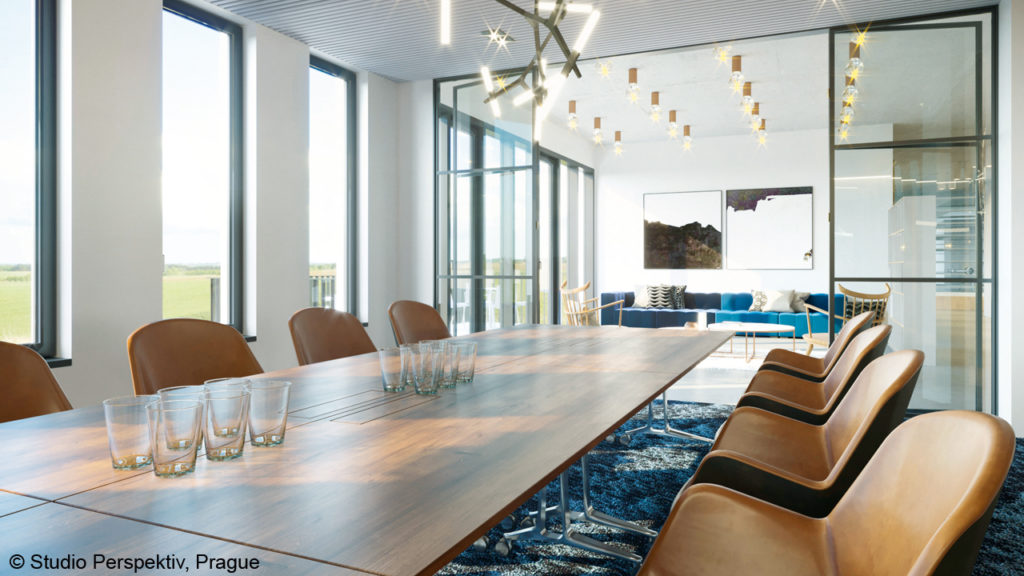
Co-working space
Originally, the co-working trend was thought of as a modern and affordable point of contact for freelancers and start-ups: people who don’t work together directly but can use mutual synergies caused by a common and inspiring workspace. In the meantime, more and more companies are setting up their own co-working spaces within their organisation: here, employees work together with external freelancers and crowdworkers; temporary project teams are formed; retreat spaces created for quick meetings. This structure provokes unplanned meetings and spontaneous thought exchanges!
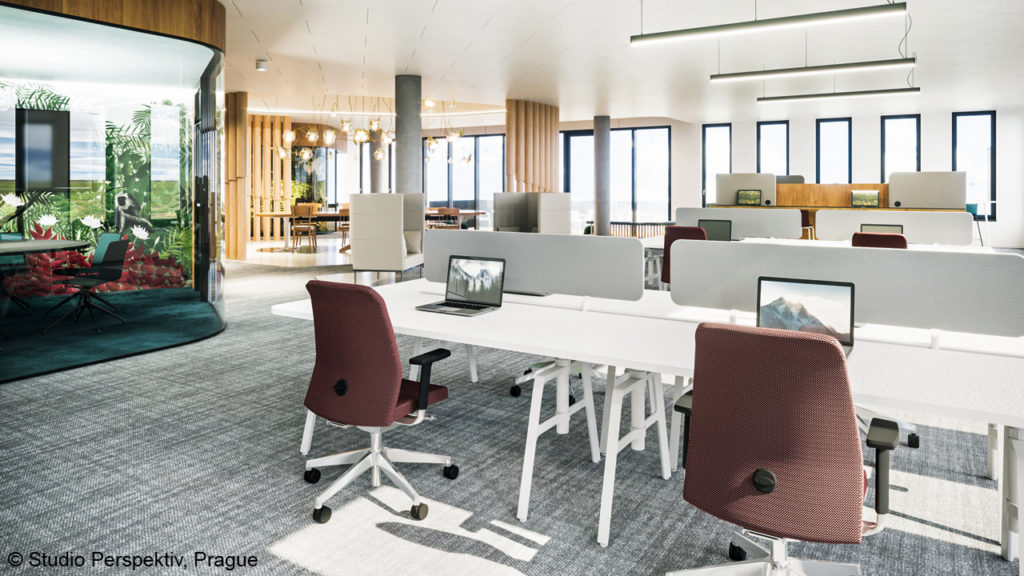
Library
No, this isn’t about books: although we no longer require the classic function of the “library” in the digital age, we still love the vintage charm of libraries: they radiate cosiness, peace, a feeling of safety and form the ideal withdrawal area away from the dynamic – sometimes hectic – office world. Some companies put strict rules in place for the use of libraries by their employees: it’s a question of creating a retreat spot for “non-communication”. The design possibilities leave a broad scope of options.
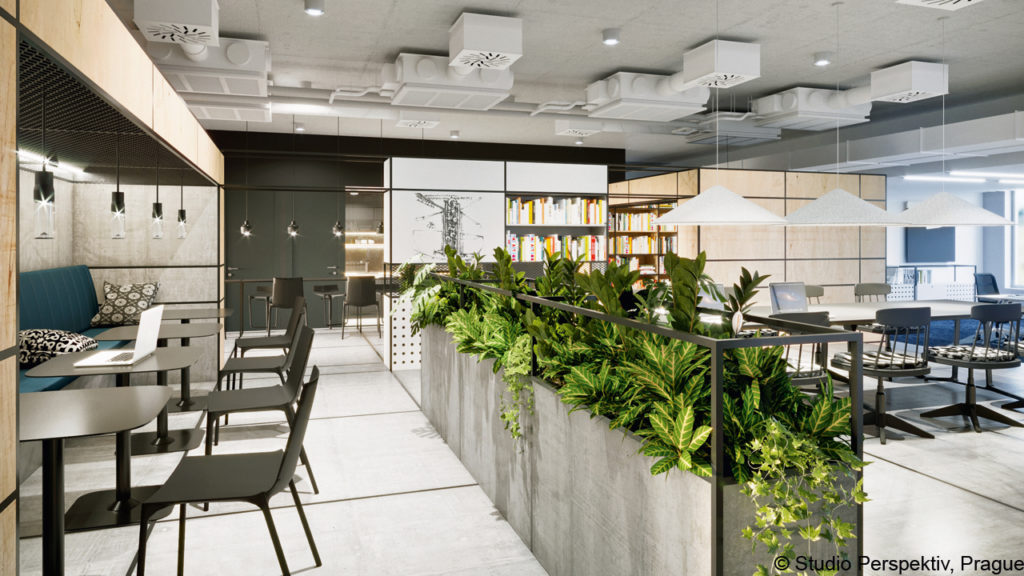
The concept is part of a collaboration with architect Martin Stára, co-founder of Studio Perspektiv in Prague. In his "New Work" approach Stara breaks with the classic ideas of office. He summarizes office work in four main typologies on which he builds new office concepts: Healthy Community // Effective Collaborations // Quality Facilities // Focused Work.
Visualizations: Studio Perspektiv, Prague: www.perspektiv.cz
